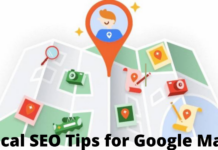Whether you’re using WordPress or a custom website, you can benefit from faster PageSpeed and Core Web Vitals. PageSpeed is a plugin for WordPress that optimizes your site for faster load times and enables you to analyze your site’s performance. Core Web Vitals is a tool that enables you to monitor performance based on Google’s Web Performance Report.
Page speed is something that can make or break your web presence. Since it’s a big part of the overall user experience, if your site hangs, users will quickly become annoyed and search for a new site. While the only way to ensure a smooth-running web site is to invest in optimizing the code, there are other ways to make a page load faster.
When it comes to Web performance, PageSpeed Insights’ three key metrics (as listed in their about page) are: 1) Speed Index (score) 2) YSlow score 3) ECP score. Before you start to optimize your website, it is worth noting that YSlow and ECP both score sites negatively. So, how do you know if PageSpeed Insights is right for your website?
Brief overview in 30 seconds:
- Websites with a high Core Web Vitals score are more likely to rank highly on Google.
- The bulk of the site’s total page speed score is made up of three basic web vitals.
- Prioritizing user experience in site design and marketing efforts may help you stand out from the competition.
- This thorough guide will help you prepare for the upcoming Google Search algorithm update’s deployment.
Through a new collection of ranking criteria measurements dubbed Core Web Vitals, Google’s most recent significant change to its search algorithm places a strong emphasis on the user experience. The typical website operates below these new requirements, according to early Core Web Vital audit findings. According to Searchmetrics’ study, eliminating unnecessary JavaScript may decrease website load time by almost one second on average.
This is a fantastic way to surpass competitors by improving your own page rankings.
Here’s everything you need to know about Core Web Vitals, as well as four easy ways to boost your stats.
Content produced in collaboration with Searchmetrics.
What are the metrics in Core Web Vitals?
Google’s page experience signals, which include mobile-friendliness and HTTPs, are expanded into Core Web Vitals. Google considers the three Core Web Vitals metrics to be a realistic representation of a real-world user experience since they evaluate loading speed, interaction, and visual stability.
- The loading time of the biggest picture or text block visible inside the user’s perspective is measured by Largest Contentful Paint (LCP).
- The time between when a user interacts with the site for the first time and when the browser reacts to that interaction is measured by the First Input Delay (FID).
- The amount of information that moves during page rendering is referred to as cumulative layout shift (CLS).
How to check the page speed of your website
PageSpeed Insights, Chrome User Experience Report, Lighthouse Audit, and Search Console are just a few of the online tools that may help you verify your page ranking score. These sites use a traffic light system to show the results of measuring page speed in different components. PageSpeed Insights breaks down the findings and indicates areas where you may improve.
In terms of numbers, what does “excellent” performance imply?
LCP should happen within 2.5 seconds of the page starting to load to offer a pleasant user experience. The FID of a page should be less than 100 milliseconds, and the CLS should be less than 0.1.
Due to a lightweight approach to web design, which mostly uses text and optimized pictures, websites like Wikipedia get the greatest page speed score. Websites with a lot of video and pictures take longer to load and provide a bad user experience. As a result, a balance must be struck between design and user experience.
Check out how your website is ranked. Enter your URL into PageSpeed Insights. Note: The top number is your Lighthouse score, also known as PageSpeed score, which ranges from zero to one hundred. While it’s an excellent overall benchmark for your site’s performance. It has nothing to do with the three Core Web Vitals measures, which should be interpreted as an examination of LCP, FID, and CLS.
How to make your website load faster
Getting a “good” mark in all three categories is called passing. Small adjustments may increase page performance by as much as one second, allowing the site to go from a “poor” or “needs improvement” score in LCP to a “good” one. Users will be pleased and the site’s traffic will grow if the load time is reduced.
According to Tom Wells, a creative marketing specialist at Searchmetrics,
“On a website, everything that isn’t required shouldn’t be there.”
Simply said, finding and deleting items that aren’t utilized or don’t provide a significant function may help the site’s page speed score.
1. Images that are too large
Because pictures are typically the biggest element to load, they are one of the major factors influencing a site’s LCP score. Due to the page rendering of numerous high-resolution pictures, ecommerce companies and others that depend significantly on images may have lower LCP ratings.
Using flexible design or next-generation picture formats like WebP, JPEG 2000, and JPEG XR to optimize these assets may increase the score by reducing rendering time. Images may often be compressed to a considerably lower size without sacrificing picture quality. Squoosh, a free resource, can help you with this.
2. Ads and dynamic content
One of the most common reasons of a low CLS score is the presence of advertisements on a web page. This may be due to website components moving to accommodate dynamic advertising, resulting in a bad user experience.
One approach to minimize content shifting is to use a clever implementation strategy like assigning size attributes or CSS aspect ratio boxes for all advertising, videos, and picture components. To put the advertisements, some businesses may utilize a plugin or code at the top of the page. However, this may result in a slower website, adversely hurting user experience and indirectly lowering rankings.
Also, unless in reaction to particular user activities, never put material on top of existing content, since this guarantees any layout shift that happens. When you click a CTA button and a form displays, for example, this is an exception.
3. A web economy based on plugins
According to Wells, plugins may be used to “plaster over the gaps” in order to address website issues. Despite the fact that it is a temporary remedy, it may slow down and impede web speed since all of the code must load before the user can engage completely with the site.
Using plugins may increase the number of server requests and the time it takes for javascript to execute. All of these issues have the potential to decrease the site’s FID score.
“We often seek for sophisticated fixes and answers, but sometimes all it takes is removing what isn’t needed,” Wells adds.
As a result, deleting certain plugins, particularly those that are no longer in use, may enhance the website’s responsiveness and performance.
4. There is an excessive amount of code
Google recommends concentrating on the overall performance of the website.
“Responsive and well-scored websites must be as light as possible,” says the author.
Wells agrees.
“The more items a server has to load, the longer the total load time will be.”
While unnecessary CSS and JavaScript may not affect the page performance score directly, they may slow down the site’s load times, cause code bloat, and degrade the user experience.
What time should I begin?
Google’s new algorithm went live in mid-June, so now is a good time to check how well your site performs in page speed testing. Websites that rank highly have better Core Web Vitals ratings, and this tendency is expected to continue as Google emphasizes user experience more.
Do you want to learn more about Core Web Vital? The Google Core Web Vitals Study, April 2024, is available through Searchmetrics.
As web developers, we’re often challenged by how to improve page speed and/or reduce the amount of resources used. The fundamental trick to improving page speed is “Hard work eats less time”, while there are a few tools and techniques that can drastically reduce the amount of resources used.. Read more about semrush core web vitals and let us know what you think.
{“@context”:”https://schema.org”,”@type”:”FAQPage”,”mainEntity”:[{“@type”:”Question”,”name”:”How can I improve my Core Web Vitals?”,”acceptedAnswer”:{“@type”:”Answer”,”text”:”
There are a few things you can do to improve your Core Web Vitals. First, make sure that youre not using too many adverbs and adjectives in your sentences. Second, try to use more verbs in your sentences. Third, avoid using passive voice.”}},{“@type”:”Question”,”name”:”What is speed index in Core Web Vitals?”,”acceptedAnswer”:{“@type”:”Answer”,”text”:”
The speed index is a measure of the difficulty of a level in Core Web Vitals. It ranges from 0 to 100, with levels that are rated as being easier having a lower speed index and harder levels having a higher speed index.”}},{“@type”:”Question”,”name”:”What are the three Core Web Vitals?”,”acceptedAnswer”:{“@type”:”Answer”,”text”:”
The three Core Web Vitals are the number of active websites, the number of active visitors, and the number of unique visitors.”}}]}
Frequently Asked Questions
How can I improve my Core Web Vitals?
There are a few things you can do to improve your Core Web Vitals. First, make sure that youre not using too many adverbs and adjectives in your sentences. Second, try to use more verbs in your sentences. Third, avoid using passive voice.
What is speed index in Core Web Vitals?
The speed index is a measure of the difficulty of a level in Core Web Vitals. It ranges from 0 to 100, with levels that are rated as being easier having a lower speed index and harder levels having a higher speed index.
What are the three Core Web Vitals?
The three Core Web Vitals are the number of active websites, the number of active visitors, and the number of unique visitors.
Related Tags
This article broadly covered the following related topics:
- core web vitals seo impact
- core web vitals update 2024
- why are core web vitals important?
- core web vitals chrome extension
- semrush core web vitals




